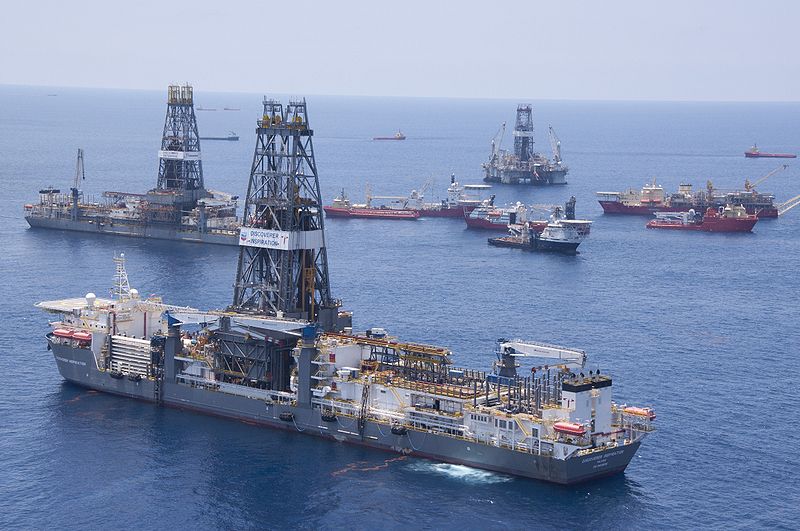Science News
The Well is Dead

Yesterday, the Macondo oil well was pronounced dead at the scene in the Gulf of Mexico. It was capped in mid-July with no further leaks, but on Friday cement was poured down the well, and yesterday the federal government confirmed that the cement had formed a final seal.
After five months of and a total of 205.8 million gallons of oil leaked into the gulf, the death of the well may be cause for celebration…
Or, maybe not. It’s true that many reports do appear upbeat about the damage done—taking the stand that it could have been a lot worse. Marsh grasses are coming back and there were fewer birds harmed in this oil disaster than the much smaller Exxon Valdez spill twenty years ago. From the New York Times:
…as the weeks pass, evidence is increasing that through a combination of luck (a fortunate shift in ocean currents that kept much of the oil away from shore) and ecological circumstance (the relatively warm waters that increased the breakdown rate of the oil), the gulf region appears to have escaped the direst predictions of the spring.
However, oil sediments continue to be found on the gulf floor. And it may be years before scientists are able to measure the total destruction to the region. The Ocean Conservancy's Stan Senner, told Discovery News that
it will take scientists at least three years to understand the ecological damage from the Gulf spill, and that it will last anywhere from 10 to 20 years.
Hopefully, we can learn from this disaster sooner than that and perhaps prevent future spills. According to the 80beats blog in Discover:
Offshore oil drilling will go on, eventually. But the ongoing fallout from the BP disaster means that when drilling resumes, oil companies will have to figure out not only how to do it more safely, but also how to convince the public they’re doing it more safely.
So, if we’re not celebrating, let’s at least let out a sigh of relief, if not more. Ding Dong the well is dead, the wicked well…